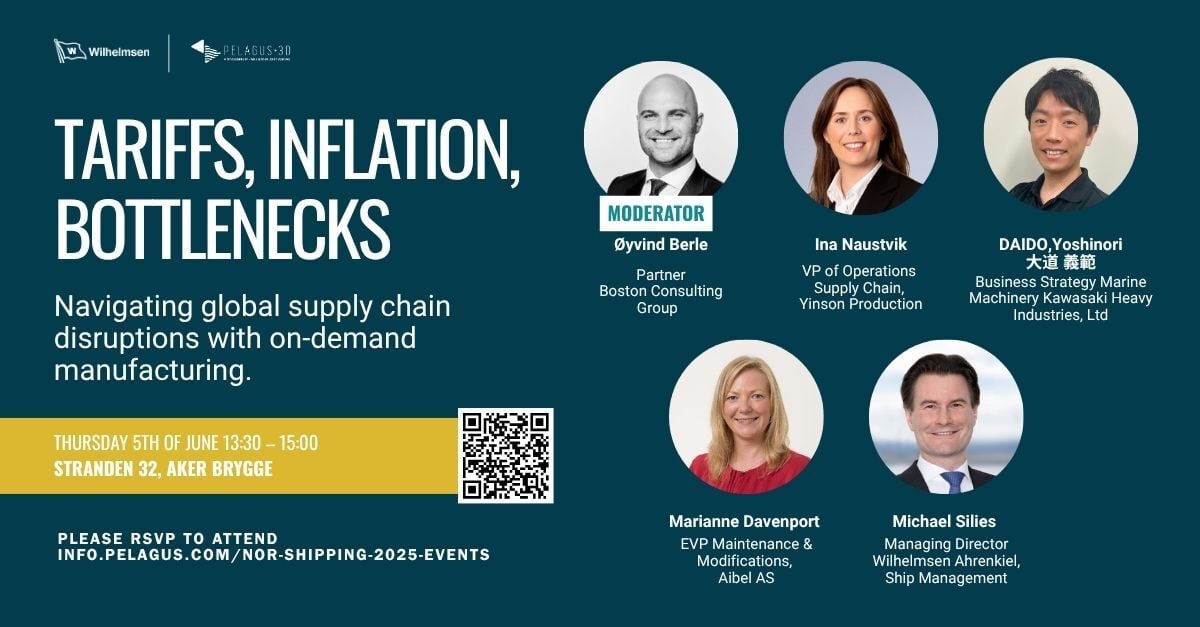At this year’s Nor-Shipping, Pelagus 3D brought together key voices from the maritime and energy sectors, sparking important conversations about the evolving landscape of global supply chains and how technologies like on-demand manufacturing are shaping the future of maintenance, sustainability, and operational resilience.
The Shifting Supply Chain Landscape
A recurring theme across the discussion was the growing complexity and fragility of today’s global supply chains. With continued uncertainty driven by geopolitical tension such as tariffs between the US and China, companies are rethinking their traditional logistics models.
According to the panel discussion, 63% of companies surveyed by Boston Consulting Group plan to restructure their global supply chains, with 42% moving toward a more regionalized approach to mitigate risks and improve responsiveness.
In the Norwegian energy sector, where much of the infrastructure is over five decades old, the focus is no longer on rapid expansion or new builds. Instead, the priority has shifted to maintenance, repair, and optimizing legacy systems, creating a need for faster access to critical spare parts and dependable support for aging equipment.
Why On-Demand Manufacturing Is Gaining Traction
Cost pressures remain a top concern for the industry. The marine aftermarket alone, worth an estimated $25 billion annually, is constantly facing inefficiencies in spare parts availability, which continues to drain resources. Panelists highlighted that up to 50% of inventory could be optimized, potentially freeing up 20–30% of working capital.
Furthermore, as sustainability goals become more crucial across regulatory and corporate agendas, on-demand manufacturing supports lower carbon emissions by reducing unnecessary transportation, overproduction, and material waste.
Addressing the Maintenance and Legacy Challenge
According to one panelist, operators are turning to digital tools such as additive manufacturing to maintain and extend the lifespan of assets. This shift empowers engineers to take a more proactive approach, spotting corrosion or degradation early and designing custom parts that not only fix the issue but also enhance performance or longevity.
Besides cost consideration, material usage, quality control, and traceability are becoming part of the decision-making process. Operators are increasingly tracking lead time reductions and using predictive maintenance to make faster repair decisions.
The Road Ahead for On-Demand Manufacturing
Panel Discussion: Tariffs, Inflation, Bottlenecks: Navigating Global Supply Chain Disruptions with On-Demand Manufacturing

Insights | 24 June 2025

